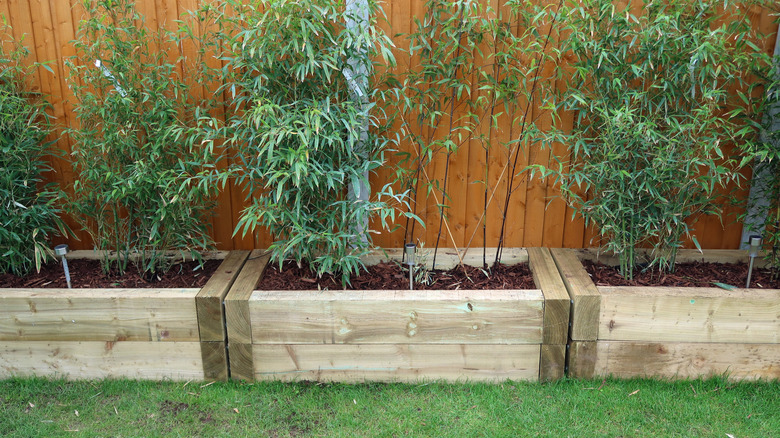The Bamboo Variety That Won't Invade Your Yard And Double As A Gorgeous Privacy Screen
Nothing can add a tropical feel to your yard like a gorgeous living bamboo privacy screen. Did you know that there are about 1500 species of bamboo around the world, and approximately half of these might be considered invasive and don't belong in a garden setting, thanks to their aggressive spreading habit. This is why planting bamboo near your home can cause serious damage. But if you've always dreamed of planting a living bamboo fence and have been hesitant, there is definitely a solution that you shouldn't be scared of trying. Among those many different species, there are also clumping, non-invasive types that are just as attractive but stay nicely contained and won't even attempt to invade the rest of your yard. Of these, there's a particularly striking red bamboo, known as Fargesia 'Jiuzhaigou I', or more commonly, red panda or red dragon bamboo.
This variety has the most vibrant red stems, more correctly known as culms. The culms are intensely red when they first emerge, but as they age, they turn a lovely yellow color. You can just imagine the stunning contrast these make as they stand out from the light green leaves. Interestingly, these leaves are also red when young but change color as they mature. They're quite small when compared to other bamboo varieties, so the overall look is soft and almost feathery. This particular species gets to an average height of around 10 feet and has an upright growth habit, making it absolutely perfect as a privacy screen when mass planted.
What you need to know about growing red bamboo as a privacy screen
This stunning variety of red bamboo can be grown in USDA hardiness zones 5 through 9. It doesn't much like the heat or high humidity, so it won't thrive in more southern regions. Although this is a shade-loving plant, it does need direct morning sun to allow the culms to exhibit their vivid red color. However, too much intense sunlight can cause the leaves to burn and result in stunted growth. So, a spot that gets morning sun and afternoon shade will be ideal for your living privacy screen.
You want to plant red bamboo in rich, acidic soil that's well-drained. During its first growing season, make sure you water it regularly and deeply so that it can establish a good root system. Once established, you'll only need to irrigate when the top 2 inches of soil are dry. The fallen leaves make an excellent mulch around the base of your plants, so there's no need to rake them up. In fact, one of the reasons your bamboo plants might turn yellow is a lack of nutrients, and the decomposing leaves will help feed the plants. This species also lends itself well to growing in large containers, which means you'll have greater flexibility because you can easily move your "screen" around for a clever landscaping idea that will add privacy to your backyard.

